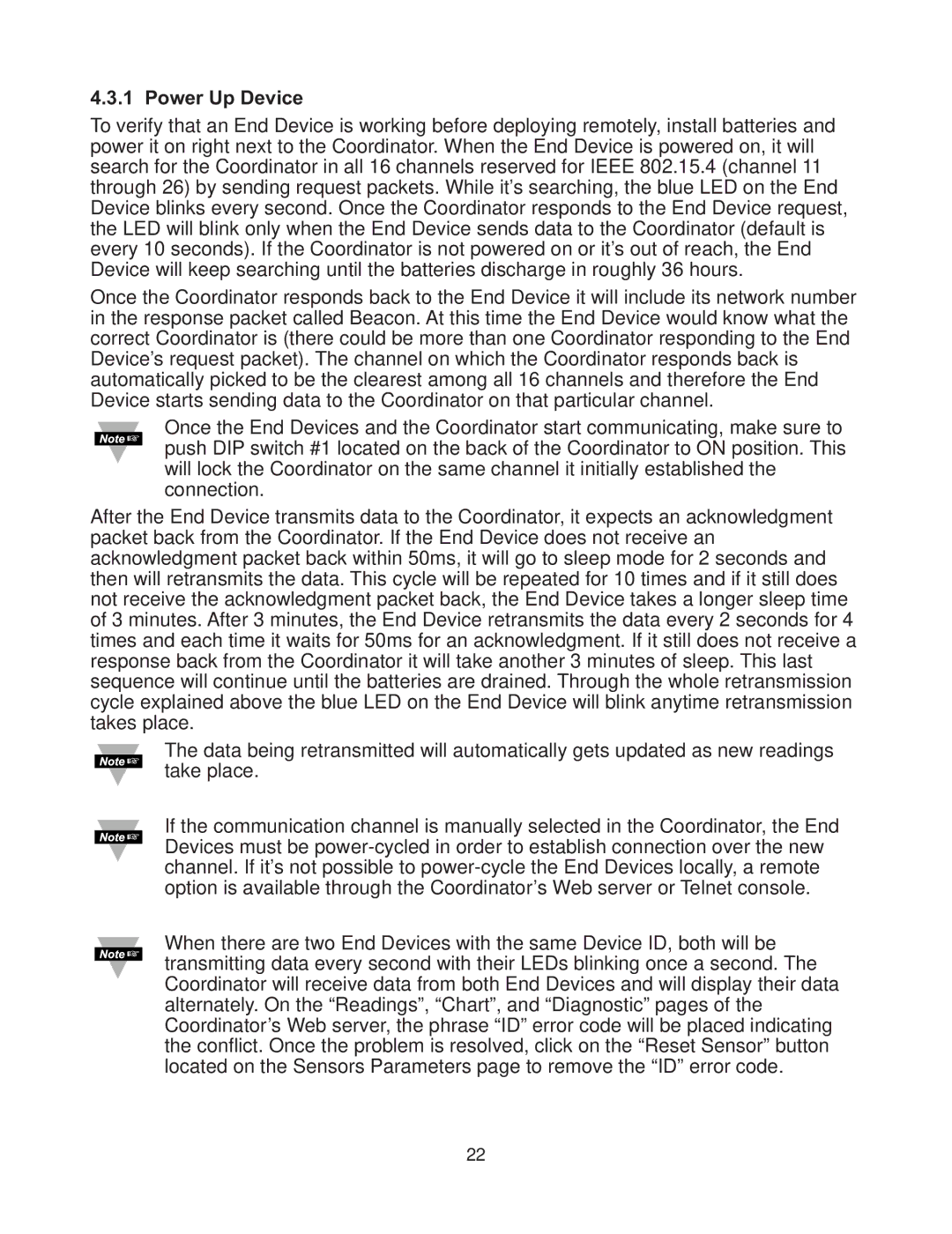4.3.1 Power Up Device
To verify that an End Device is working before deploying remotely, install batteries and power it on right next to the Coordinator. When the End Device is powered on, it will search for the Coordinator in all 16 channels reserved for IEEE 802.15.4 (channel 11 through 26) by sending request packets. While it’s searching, the blue LED on the End Device blinks every second. Once the Coordinator responds to the End Device request, the LED will blink only when the End Device sends data to the Coordinator (default is every 10 seconds). If the Coordinator is not powered on or it’s out of reach, the End Device will keep searching until the batteries discharge in roughly 36 hours.
Once the Coordinator responds back to the End Device it will include its network number in the response packet called Beacon. At this time the End Device would know what the correct Coordinator is (there could be more than one Coordinator responding to the End Device’s request packet). The channel on which the Coordinator responds back is automatically picked to be the clearest among all 16 channels and therefore the End Device starts sending data to the Coordinator on that particular channel.
Once the End Devices and the Coordinator start communicating, make sure to push DIP switch #1 located on the back of the Coordinator to ON position. This will lock the Coordinator on the same channel it initially established the connection.
After the End Device transmits data to the Coordinator, it expects an acknowledgment packet back from the Coordinator. If the End Device does not receive an acknowledgment packet back within 50ms, it will go to sleep mode for 2 seconds and then will retransmits the data. This cycle will be repeated for 10 times and if it still does not receive the acknowledgment packet back, the End Device takes a longer sleep time of 3 minutes. After 3 minutes, the End Device retransmits the data every 2 seconds for 4 times and each time it waits for 50ms for an acknowledgment. If it still does not receive a response back from the Coordinator it will take another 3 minutes of sleep. This last sequence will continue until the batteries are drained. Through the whole retransmission cycle explained above the blue LED on the End Device will blink anytime retransmission takes place.
The data being retransmitted will automatically gets updated as new readings take place.
If the communication channel is manually selected in the Coordinator, the End Devices must be
When there are two End Devices with the same Device ID, both will be transmitting data every second with their LEDs blinking once a second. The Coordinator will receive data from both End Devices and will display their data alternately. On the “Readings”, “Chart”, and “Diagnostic” pages of the Coordinator’s Web server, the phrase “ID” error code will be placed indicating the conflict. Once the problem is resolved, click on the “Reset Sensor” button located on the Sensors Parameters page to remove the “ID” error code.
22
